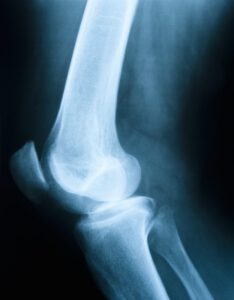A large new study spearheaded by researchers at Montreal’s McGill University found a rare genetic variant with a large impact on bone density and the propensity for some people to fracture bones more easily than others.
density and the propensity for some people to fracture bones more easily than others.
This study – a meta-analysis that pooled data from 27 different cohorts totaling more than 53,000 people and included contributions from researchers at almost 100 different institutions including 23andMe – sheds new light on the genetics behind bone mineral density and fractures.
But the work also illustrates the potential for whole genome sequencing and the power of large reference panels like those developed by the 1000 Genome Project and UK 10K to identify rare variants that have a strong influence on common traits and diseases.
“Our study illustrates that larger reference panels, covering relevant ethnicities, will facilitate the discovery of low frequency and rare variants,” the authors said.
This approach offers a promising avenue for finding what scientists refer to as the “missing heritability” problem. For many conditions scientists know that genetics plays an outsized role in its heritability – or the variation of a condition within a population that is due to genetics. But scientists have yet to identify many of the genetic factors involved, thus the term “missing heritability.”
Bone Mineral Density
In the case of bone mineral density, its heritability is estimated to be about 85 percent. Yet genome wide association studies have only identified variants that explain about 5 percent of that variation. So researchers in this study used a mixed approach. They wanted to look deeper into the genome for rare, low frequency and non-coding genetic variants that may play also play a role.
The approach included whole genome sequencing, exome sequencing, and genotypic data. It also included data imputed through the use of whole genome sequence reference panels to find rare and non-coding genetic variants.
The approach worked, allowing this team to find a rare non-coding variant that had a four times greater effect on bone mineral density than the average effect of all other variants previously identified to be associated with the condition. This rare variant had a large effect, suggesting that the gene has an important functional role in bone development.
Testing in Mice & replication
After making the finding, the researchers tested it in mice. They looked at how changes to a variant near the EN1 gene might impact bone mineral density. It turned out to have an affect on limb development in mice.
Then the team looked to see if they could replicate their findings. They wanted to see if a rare non-coding variant near the EN1 gene, had a very large effect on bone mineral density. Using data from other cohorts – including 23andMe – the researchers were also able to replicate their findings.
Importance of Non-Coding Variants
The researchers used data from about half a million 23andMe customers. These customers who consented to research also gave information about fractures. In addition, the team looked at additional findings regarding several other variants. These were other variants they found that were also associated with the condition.
The study offers new insight into the biology of bone development. But it also is a good proof point on leveraging large whole genome sequencing reference panels. Doing this allows researchers to impute data from multiple cohorts and search for relevant rare non-coding variants involved in other diseases and conditions.



